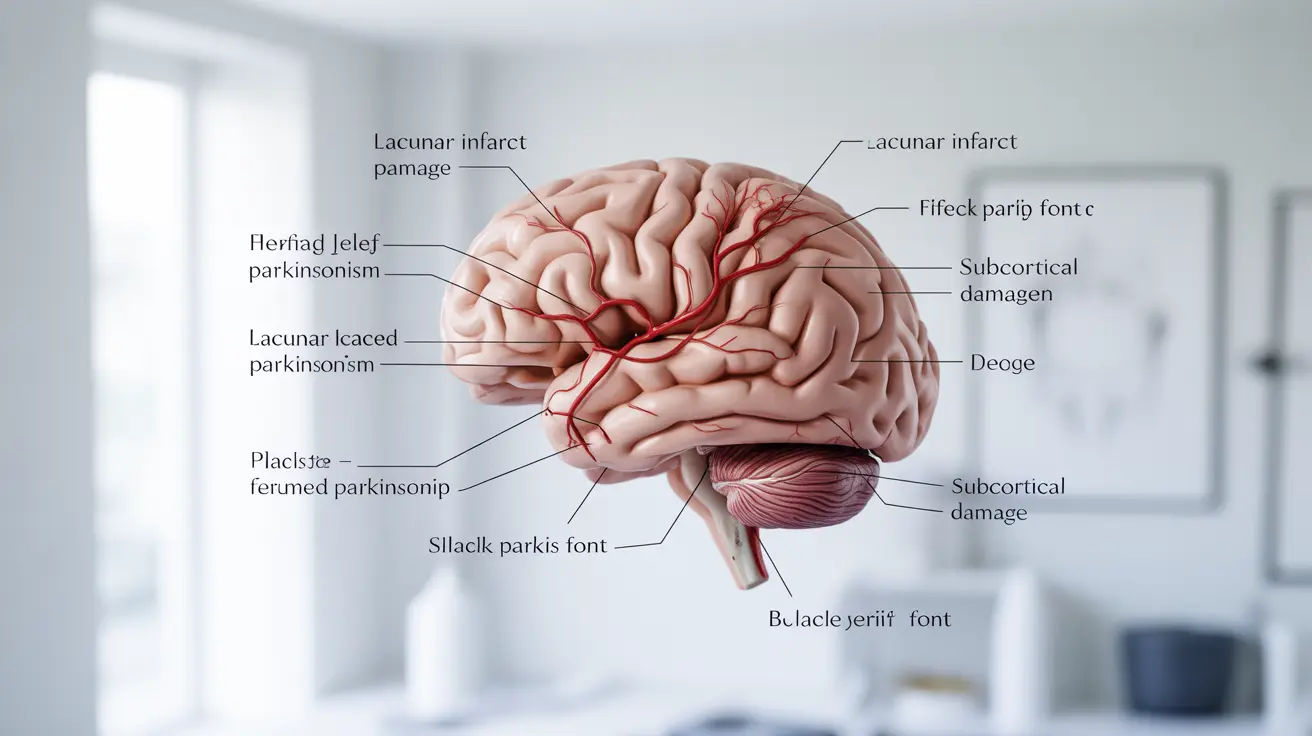Vascular parkinsonism is a complex neurological condition that shares similarities with Parkinson's disease but has distinct characteristics and progression patterns. This condition, often called arteriosclerotic parkinsonism, develops due to small strokes and blood vessel damage in areas of the brain controlling movement. Understanding its stages and progression is crucial for proper management and treatment planning.
Early Stage Symptoms and Manifestations
In the initial stages of vascular parkinsonism, patients typically experience symptoms that differ from classic Parkinson's disease. The most notable early signs include:
- Difficulty with lower body movement
- Problems with balance and walking
- Increased risk of falls
- Cognitive changes or mild confusion
- Problems with urinary function
Unlike traditional Parkinson's disease, these symptoms often develop more rapidly and affect the lower body more prominently than the upper body.
Progressive Stage Characteristics
As vascular parkinsonism progresses, patients may experience more severe symptoms and additional complications:
- Worsening gait problems
- Increased cognitive decline
- Greater difficulty with daily activities
- More pronounced balance issues
- Higher risk of serious falls
Distinguishing Features from Parkinson's Disease
Vascular parkinsonism has several key characteristics that set it apart from idiopathic Parkinson's disease:
- Symptoms typically affect both sides of the body equally
- Less prominent tremor
- More pronounced lower body involvement
- Faster progression of symptoms
- Different response to traditional Parkinson's medications
Risk Factors and Causes
Understanding the risk factors for vascular parkinsonism is essential for prevention and management:
- High blood pressure
- Diabetes
- High cholesterol
- Smoking
- History of stroke or mini-strokes
- Advanced age
- Cardiovascular disease
Treatment Approaches and Management
Managing vascular parkinsonism requires a comprehensive approach:
Medical Interventions
While traditional Parkinson's medications may have limited effectiveness, several treatment options can help manage symptoms:
- Blood pressure management
- Anti-platelet medications
- Physical therapy
- Occupational therapy
- Balance training
Lifestyle Modifications
Implementing lifestyle changes can help slow progression and manage symptoms:
- Regular exercise appropriate for ability level
- Dietary modifications to support cardiovascular health
- Smoking cessation
- Regular medical monitoring
- Home safety modifications
Frequently Asked Questions
What are the different stages of vascular parkinsonism and how do symptoms progress over time?
Vascular parkinsonism typically progresses through stages beginning with mild balance and walking difficulties, advancing to more severe mobility issues and cognitive decline. Unlike Parkinson's disease, symptoms often develop more rapidly and primarily affect the lower body.
How can vascular parkinsonism be distinguished from idiopathic Parkinson's disease based on symptoms and progression?
Vascular parkinsonism typically shows symmetric symptoms, less tremor, more prominent lower body involvement, and faster progression compared to idiopathic Parkinson's disease. It also tends to respond differently to traditional Parkinson's medications.
What are the main causes and risk factors that lead to vascular parkinsonism?
The main causes include small strokes, blood vessel damage, and cardiovascular problems. Risk factors include high blood pressure, diabetes, smoking, advanced age, and a history of stroke or cardiovascular disease.
Why do typical Parkinson's medications like levodopa often have limited effectiveness in treating vascular parkinsonism?
These medications have limited effectiveness because vascular parkinsonism is caused by blood vessel damage rather than dopamine deficiency, which is the primary issue in Parkinson's disease. The underlying mechanism of brain damage is different.
What treatment and lifestyle strategies can help manage symptoms and slow progression of vascular parkinsonism?
Effective management strategies include blood pressure control, anti-platelet medications, physical therapy, regular exercise, dietary modifications, and home safety adaptations. A comprehensive approach combining medical treatment with lifestyle changes typically yields the best results.




